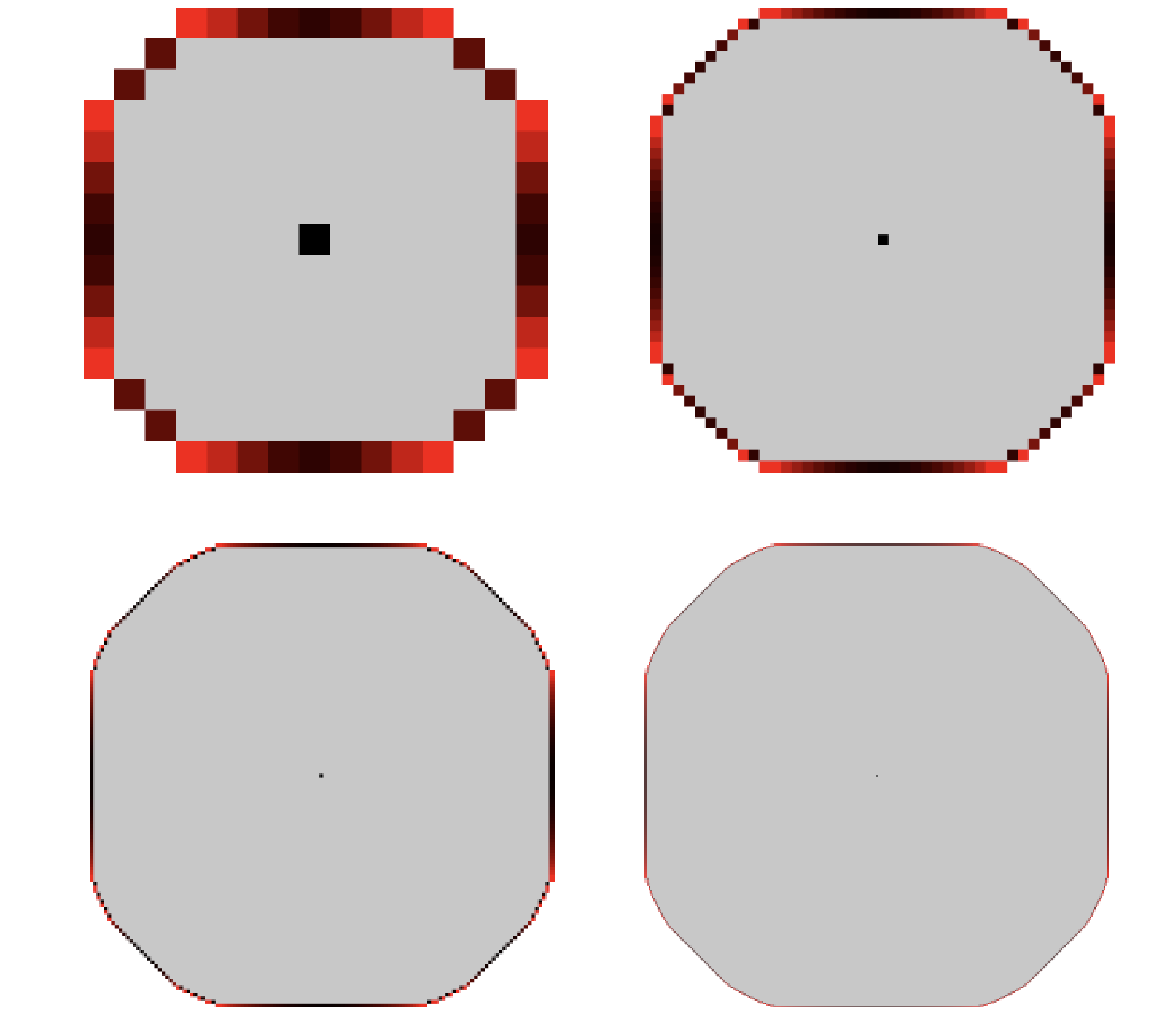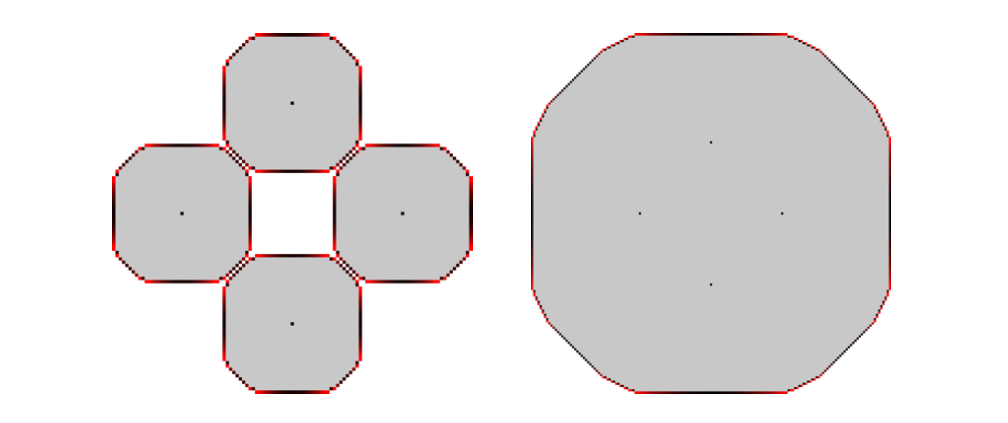Other type of processes
OpenYear of origin: 2017
Posted online: 2018-06-28 19:02:43Z by Henrik Shahgholian77
Cite as: P-180628.3
General Description View the group
Let $\mu_0$ be a given (mass) distribution on $\mathbb Z^d$, i.e. a non-negative function supported on finitely many sites of $\mathbb Z^d$. Fix also a threshold $\kappa_0>0$. For each integer $k\geq 0$ we inductively construct a sequence of sets $V_k$, mass distributions $\mu_k$, and functions $u_k$ as follows. Start with $V_0 = \mathrm{supp} \mu_0$ and $u_0=0$. For an integer time $k\geq 0$ a particular site $x\in \mathbb Z^d$ is called unstable if either of the following holds:
(a) $x\in \partial V_k$ and $\mu_k (x) > \kappa_0$,
(b) $x\in \, \overset{\circ}{V_k}$ and $\mu_k (x) >0$.
Otherwise a site is called stable. We call the number $\kappa_0$ the (boundary) capacity of the model and refer to $V_k$ as the set of visited sites at time $k$.
Any unstable site can topple by distributing all its mass equally among its $2d$ lattice neighbours. More precisely, for each $k\geq 0$ we choose an unstable site $x\in V_k$ and define $V_{k+1} = V_k \cup \{y\in \mathbb Z^d: \ y\sim x \}$, \begin{equation} \tag{1} \mu_{k+1}(y) = \begin{cases} 0, &\text{if $y=x$}, \\ \mu_k(y) + \frac{1}{2d}\mu_k(x) ,&\text{if $ y\sim x $}, \\ \mu_k(y), &\text{otherwise}, \end{cases} \end{equation} and $u_{k+1} (y) = u_k(y) + \mu_k(y) \delta_0(y-x)$, $y\in \mathbb Z^d$, where $\delta_0$ is the Kronecker delta symbol at the origin, i.e. $\delta_0(x)$ equals 1 if $x=0$ and is zero otherwise for $x\in \mathbb Z^d$. We call $u_k$ the odometer function at time $k$. For the sake of convenience, we do allow the toppling to be applied to a stable site, as an identity operator, i.e. if at time $k$ a toppling is applied to a stable site $x$, then we set $V_{k+1}= V_k$, $u_{k+1}=u_k$ and $\mu_{k+1}=\mu_k$. We say that toppling $x$ is legal, if $x$ is unstable. If for some $k$ there are no unstable sites, the process is terminated. We call this model boundary sandpile (BS) and denote by $BS(\mu_0, \kappa_0)$, where $\mu_0$ is the initial distribution, and $\kappa_0$ is the boundary capacity of the model.
It is clear that the triple $(V_k, \mu_k, u_k)_{k=1}^\infty$ may depend on the choice of the unstable sites, i.e. the toppling sequence. Later on we will see that for a suitable class of toppling sequences stable configurations exist and are identical (see Propositions 2.1, 2.3 in [1]). Observe that from the definition of discrete Laplacian and (1) above, we easily see that for each $k\geq 0$ one has \begin{equation} \Delta u_k (x) = \mu_k(x) - \mu_0(x) , \qquad x\in \mathbb Z^d, \end{equation} i.e. the Laplacian of $u_k$ represents the net gain of mass for a site $x$ at time $k$.


Problem's Description
Problem 3. Is there a boundary sandpile type process, leading to that the total mass of the system is being redistributed onto the combinatorial free boundary (possibly with a different background rules) which has a sphere as its scaling limit?
In fact, this problem does not exclude, as a possible candidate, the boundary sandpile process considered in this paper. It is apparent from numerical simulations (see [1; Figure-1]), that the shape of $\mathrm{BS}$ divaricates from a sphere. However, we do not have a rigorous proof of this fact.
Months after the submission of this paper, the current authors found a new sandpile redistribution rule [2], which partially answers the quest of Problem 3, at least for single sources. The relevance of Problem 3, however, remains in place, as there is no reason to believe that there does not exist a more natural rule than the one obtained in [2].
No solutions added yet
Created at: 2018-06-28 19:02:43Z
No remarks yet